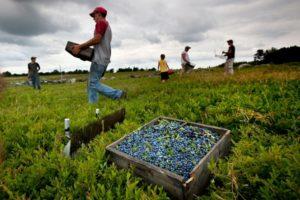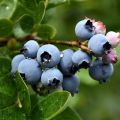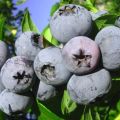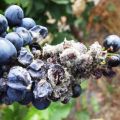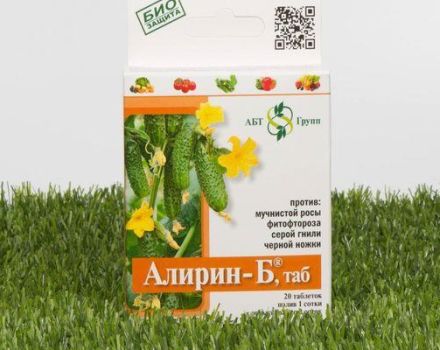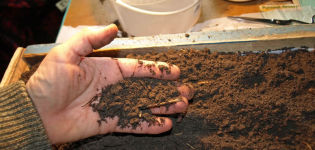Characteristics and description of Erliblu blueberries, planting and care
Erliblu blueberries are considered one of the healthiest berries due to their high vitamin content. The variety is characterized by early fruiting and high frost resistance. Due to its early ripening, it is actively used in the fresh berries market, as it retains its qualities better during storage and transportation compared to late varieties. Consider the advantages and disadvantages of the variety and learn how to properly plant and care.
Breeding history of the variety
Erliblu was bred by breeders in the middle of the twentieth century, in North America, after which the variety came to the Soviet Union. In modern times, fruit crops are grown mainly in European countries.
Pros and cons of culture
The main advantage of Erliblu blueberry is its taste. The berries have a pleasant sweet taste. Fruits after ripening are able to not crumble for a long time. In addition, Erliblu is characterized by high resistance to frost and immunity to powdery mildew..
The main disadvantage of the plant can be considered its picky about the type of soil. The soil for planting should contain a large amount of humus and have an acidity in the region of 3.5-4.5. Also, the bushes are sensitive to gusts of wind, and the berries are not the best transportability.
Description and characteristics of Erliblu blueberries
Erliblu is a medium-sized blueberry with early fruiting. Its fruits are characterized by a pleasant sweet and sour taste and a large amount of vitamins.
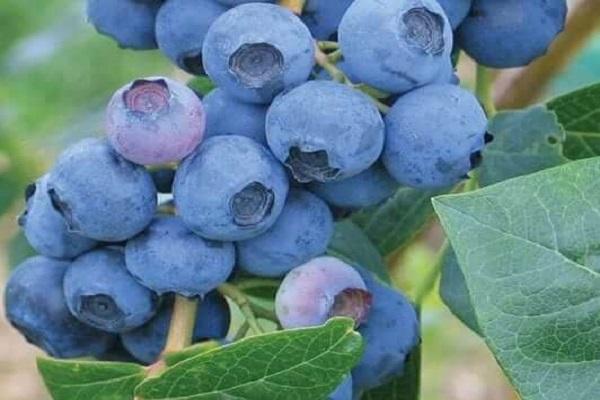
Bush and root system
The Erliblu variety belongs to the medium-sized type. The stems are of medium length. Vertical shoots reach a height of one and a half meters. The leaves are elliptical, dark green in color. The leaves of young bushes are pinkish. Blueberries do not need frequent pruning and multiply without problems.
All about flowering and fruiting
The plant ripens at the beginning of July. Blueberries are light blue with a dark blue bloom, spherical, reaching from one and a half to two centimeters in diameter. The average weight of a berry is two grams.From the first fruiting to the last, the fruits gradually become smaller. They have a sweet and sour taste.
Erliblu is characterized by irregular fruiting, which, according to many gardeners, is its disadvantage. On average, the yield per bush is 4 to 7 kilograms, but in some seasons it can drop to two. This is often found in five-year-old bushes with thickening or improper feeding.
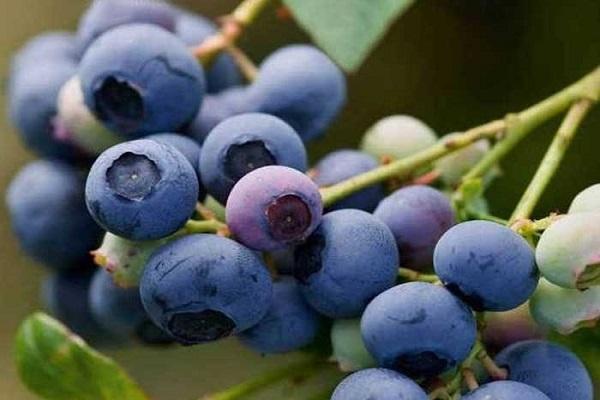
Useful properties and use of berries
The berries of the plant have a beneficial effect on the heart, blood vessels, normalize the work of the gastrointestinal tract, and slow down the aging of the body.
Blueberry fruit has beneficial effects on eye health. Eating blueberries relieves eye strain and helps restore visual acuity.
Blueberries contain pectins that remove radiation from the body. Therefore, this berry is appreciated by workers in hazardous production.
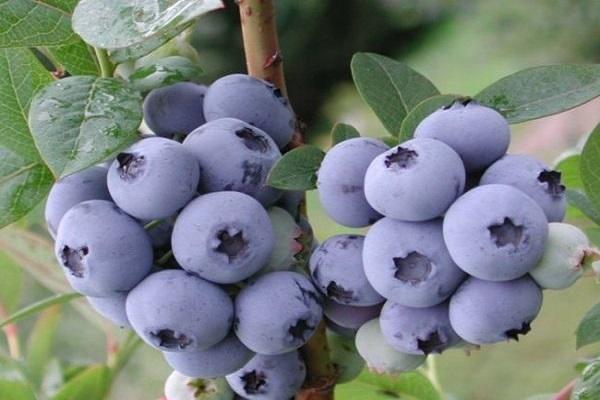
Disease and pest resistance
Despite the fact that blueberries are less susceptible to disease, the selection of low-quality seedlings and soil can provoke infection. Erliblu blueberries are immune to powdery mildew, but they are susceptible to gray rot, a fungus that infects the ground part of the plant and causes fruit rot. In addition, improper growing conditions can cause brown rot, anthracnose, and white spotting.
Of the insect pests, aphids are the most dangerous for blueberries. Aphids feed on the sap of a young plant, deforms leaves, shoots, and promotes the spread of mold. In addition, parasites such as the whitewort butterfly and leaf gall midge cause harm to the plant.
Resistant to low temperatures and drought
Erliblu has a high resistance to frost and the ability to recover from freezing. She usually does not need additional shelter for the winter. The only exceptions are regions where low temperatures in winter can last for a long time. In addition, blueberries are drought tolerant.
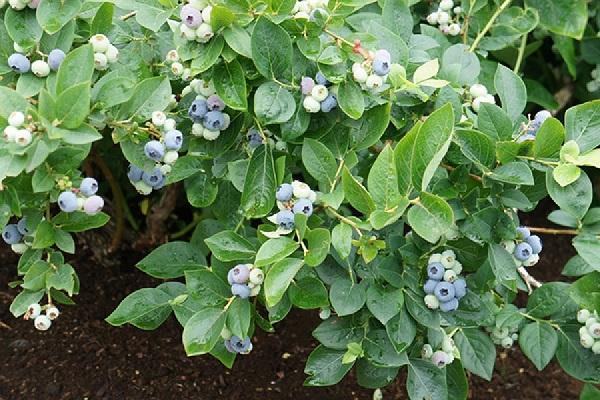
How to plant blueberries
The most important condition for planting blueberries is to keep the soil acidic. In addition, it is necessary to choose the right place for planting - the plant must receive a sufficient amount of sunlight and heat.
Timing and preparation of planting material
The best time to plant Erliblu blueberries is autumn and early spring. In addition to Erliblu, it is recommended to grow several different varieties of crops at once on the site. A similar principle will contribute to earlier ripening of fruits.
Soak the seedling pots in water for ten minutes before planting to saturate the root system. Then remove the plants from the pots and knead the roots. When planting in the ground, it is recommended to deepen the seedling into the soil about five centimeters above the level that the soil in the pot reached.

How to create the soil for the blueberries
Before planting seedlings in the ground, measure the pH of the soil. Blueberries of all varieties prefer soil with acidity in the pH range from 3.5 to 4.5. In order to create a soil with the necessary acidity on your site, foliage, sawdust, peat and other materials are used.
To avoid waterlogging, seedlings should not be planted on low ground. This is fraught with a lack of oxygen and excess moisture, as a result of which the roots of the plant will begin to rot and die off. For the same reason, clay soils should be avoided.
Grow blueberries in a sunny spot. In the shade, the crop will yield less yield, and it will be with lower taste and health properties.
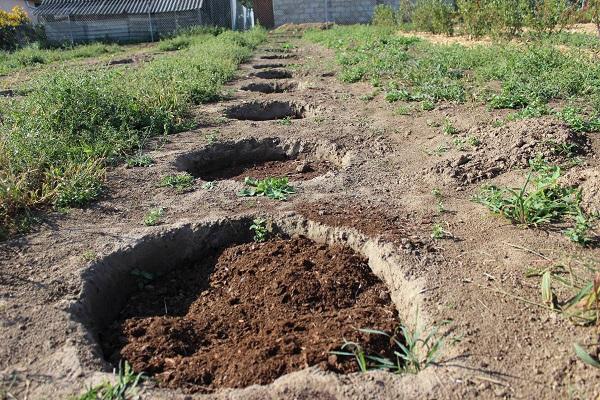
For planting seedlings, holes are prepared 60 centimeters wide and 40-50 deep, filled with soil of the required acidity. The distance between seedlings should be equal to one meter, and between adjacent rows - at least two meters.
Planting blueberries on a comb
When planting in the ground, dig a trench one meter wide and ten centimeters deep. Peat with needles, sawdust or sand is poured into the trench as a substrate. Alkaline fertilizers, such as manure or humus, should not be added to the soil, as blueberries only take root on acidic soil. The substrate is covered with a mound, a bush is planted on top of it. After planting, the bush must be watered.
Landing in special wells
To plant blueberries using this method, you must first dig trenches or holes 40 centimeters deep and 60 to 150 centimeters wide. Fill pits with substrate. Before planting seedlings in containers, they must be soaked in water for half an hour.
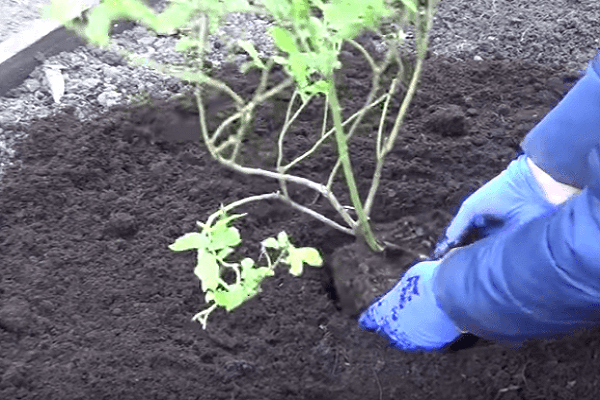
We plant a plant in containers
Blueberries are great for growing in specialized containers. In pots and containers, it is much easier to provide the soil acidity necessary for the plant than in the open field.
There should be drainage holes at the bottom of the planting container. The size of the container itself should be 5-10 times the size of the root ball of the plant. It is best to keep the container wide as the root system of the blueberry spreads in breadth.
Features of crop care
Garden blueberries require proper care, which consists in timely regular watering, feeding the bushes with the necessary fertilizers, sanitary pruning and treatment from diseases and pests.
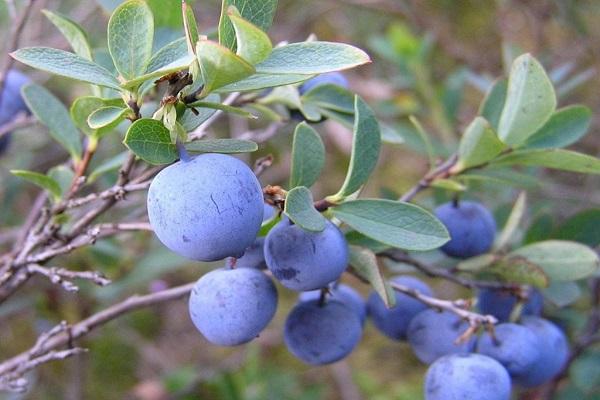
Watering and using fertilizers
Blueberries require competent and regular watering. Moisture at the roots should not stagnate for a long time, but its lack also harms the plant. The bushes should be watered two days a week, morning and evening, one bucket at a time. Blueberry yield directly depends on watering. In hot weather, spray the plant to protect it from overheating.
In early spring, mineral fertilizers should be applied to the soil. Organic fertilizers are contraindicated for blueberries. Three times a season, nitrogen fertilizers should be applied to the soil. In summer and autumn, add 100 grams of phosphate fertilizer to the soil once.
Mulching and loosening the beds
Sawdust is best suited for mulching the beds, as it retains moisture and decomposes slowly. The thickness of the coating should be equal to one decimeter. The mulch must be laid out around the bush within a radius of 50 centimeters. The procedure is performed once after planting. After the coating is changed, if necessary, if it begins to rot and deteriorate.
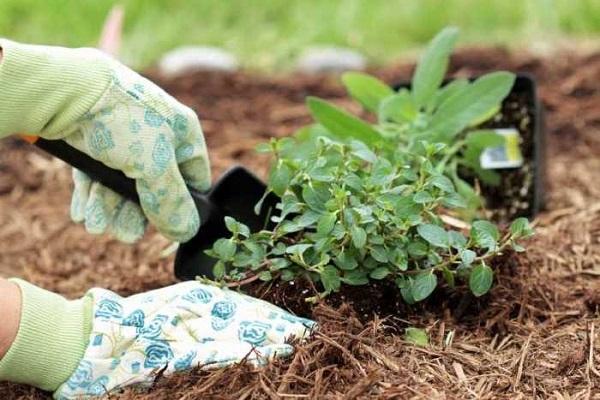
Formative pruning
Erliblu blueberries generally do not require annual pruning. Starting from the third year, they carry out sanitary pruning of pieces - they shorten root growths, form strong main branches. The most powerful shoots should be left. Weak shoots are eliminated. Starting at the age of six, rejuvenating pruning is carried out to the bushes: they remove the old, obsolete shoots and leave young, fruiting ones.
Preventive treatment of the bush
To prevent diseases and pests in early spring, treat plants with Bordeaux liquid. Remove damaged branches in time, prune blueberries in time for air circulation. After harvest, the bushes should be treated with fungicides..
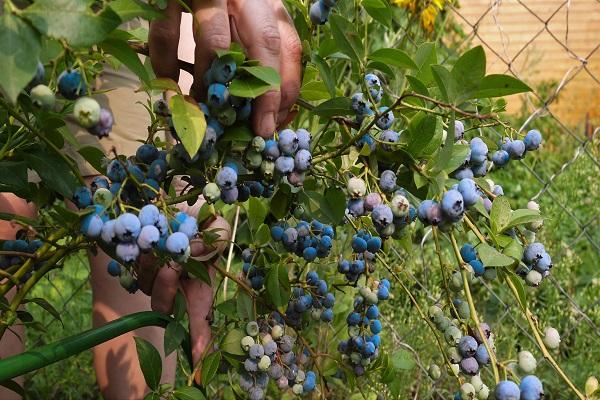
Wintering
The Erliblu variety is distinguished by its strong frost resistance, therefore, it practically does not need additional shelter for the winter, with the exception of areas with very low, long winter temperatures. For the winter, you should mulch the soil with needles or bark.
In cold regions, nonwoven fibers can be used to cover the blueberry by pressing the branches to the ground with bricks or pieces of wood. First of all, a shelter is needed to protect the plant from burns on sunny frosty days, since at night during this period the branches freeze strongly, and during the day they heat up sharply.Because of this, cracks form on the branches.
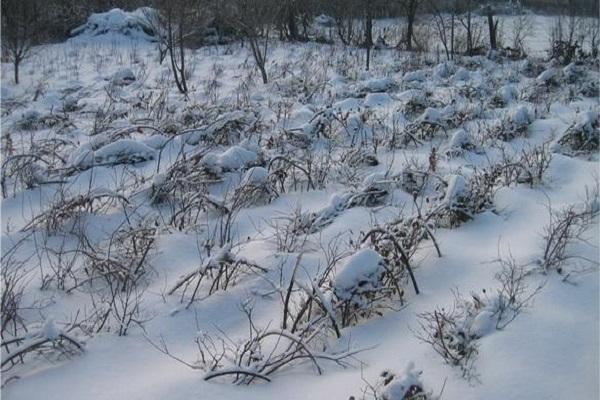
Reproduction of garden blueberries
Garden blueberries are propagated by seeds, cuttings and cuttings. Seed propagation is used mainly by breeders; for summer cottages, this method is poorly suited, since it is a long and laborious process.
Reproduction by layering also takes a lot of time. Therefore, the grafting method is more often used. To do this, use lignified and semi-lignified cuttings.
Plant propagation by cuttings occurs due to the formation of new adventitious roots from the plant tissues of the stem. Shoots grow from existing buds.
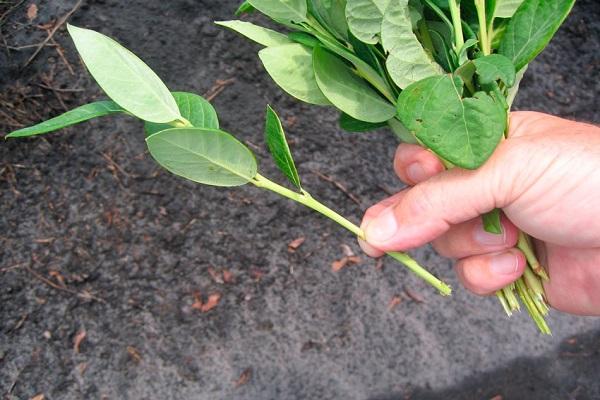
Wood cuttings are harvested in winter; for this, annual shoots are chosen. They are cut off and bundles are formed from them, which are laid aside until the time comes to root them. Store woody cuttings in the refrigerator or cellar. Most often, woody cuttings are prepared for long-distance transfer and planting for the next season.
Semi-lignified cuttings are harvested in the middle of summer. For their manufacture, young shoots of the plant are torn off, along with a small piece of last year's bark. The leaves on the handle are cut to about a quarter. The lower part of the shoot is treated with preparations for root growth. Cuttings should be planted so that the leaves remaining on them do not come into contact with each other.
Until the cuttings are finally rooted, the plant should be watered regularly and provided with oxygen.

Variety reviews
Many gardeners positively note the taste and useful qualities of Erliblu berries and its ability to bear the first fruits. However, the variety has obvious drawbacks - it is poor transportability, in comparison with late varieties, and a long fruiting period. It is also worth noting the unevenness of fruiting - in different years the plant brings a crop of different volumes.

